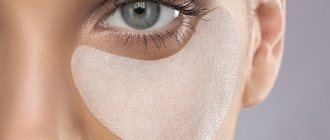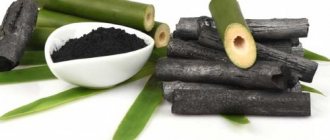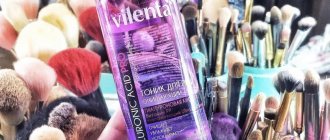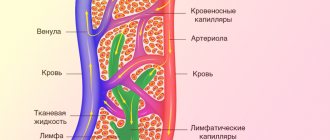Dry, thinning and brittle hair requires extra attention. Masks for dry hair at home will help get rid of brittle hair shafts. They also moisturize, add shine, strengthen, and nourish.
It is necessary to prepare masks for hair and scalp only from natural products. It is best to purchase them from farmers rather than in a store. Such products will not contain antibiotics, preservatives or other harmful chemicals.
- Fruits and berries
- For colored and bleached curls
Features of choice
Main criteria to consider:
- the mask must be suitable for your hair type;
- study the composition of purchased products - often the most harmful components are listed at the very end;
- the action of the mask should be aimed at eliminating certain deficiencies, since products for all hair types may be ineffective;
- When using store-bought medications, follow the instructions, which should be on the package or on a separate leaflet.
Wrap up your hair
The best way to enhance the effect of the mask is to wrap the strands. To do this, you need to apply the selected cosmetic product to your curls, put on a shower cap and a towel.
During this procedure, the cuticle opens, and nutrients can penetrate deeper into the strands and remain in the hair longer. Leave the mask on your hair for the specified time, then rinse with warm water and rinse with cool water to close the cuticle.
Found a violation? Report content
Use on dirty or clean hair?
Which hair is best to apply on - dirty, clean, or it doesn’t matter which one? After washing with shampoo, the keratin scales of the hair open, which allows nutrients to more easily penetrate into the cells. And the main components of the masks cover some of the scales, making the hair shiny and smooth.
Therefore, experts recommend applying the products to washed and slightly damp hair. Only masks prepared with oils can be applied to dry, dirty strands , since their residues are quite difficult to wash off and make the hair greasy; in other cases, apply to clean hair.
It is better to apply home-prepared compositions to slightly damp and dirty hair - in this case, the components of the mask will lie more smoothly and be absorbed faster.
IMPORTANT: you can massage the scalp while applying the mask only when it is washed. Otherwise, styling products and dirt will penetrate the skin cells.
Now you know when it is better to apply - before or after washing your hair.
Regular cleansing of the scalp from dead cells and fat improves the flow of oxygen and also softens the hair structure. Therefore, it is advisable to apply masks after peeling , because... at this moment, the tone increases, cellular metabolism is activated, and the hair roots receive nutrition due to the acceleration of blood supply. This complex effect helps solve the following problems:
- hair loss;
- dermatological diseases;
- violation of fat metabolism.
Essential oils, which can be added as an additional component to masks, also improve the condition of hair. In this case, the dense composition of the mass fills the cavity between the scales and solves the problem of split ends and brittle hair.
You now know, including how to apply it correctly - before or after washing your hair. As you can see, in some situations it can be done on clean hair, and in others on dirty hair.
Contraindications
Although the mixtures have a positive effect on the condition of the hair, there are a number of contraindications that must be taken into account.
If the product is purchased in a store, you must carefully study the instructions , since professional preparations contain a large number of chemical elements.
Before using homemade masks, an allergy test is performed . The mixture may contain components that can cause itching, irritation, and redness.
should use the products with caution . You should especially avoid contact with nicotinic acid and demixide - these substances can penetrate into the blood and cause undesirable consequences.
How to apply?
Applying the product to the head and hair is perhaps the only way to use it. In order for the product to bring maximum benefit, you need to adhere to the following tips :
Be sure to comb your hair before the procedure so that the strands do not get tangled.- For best results, use slightly warmed masks if they contain oil.
- For oily roots and dry ends, it is best to use several types of masks - clay and oil-based.
- Most moisturizing and restorative products are applied to the roots and then distributed throughout the entire length of the hair using a comb.
- If the preparation has a liquid consistency, then it is better to spread it with your fingers, lightly massaging the root zone (you can use a natural bristle brush).
- Homemade masks have a short shelf life, so they are made immediately before use. It is also prohibited to store them in the bathroom, since such compositions cannot withstand temperature changes.
- Before applying the mask with gelatin, step back 10 mm from the roots.
After processing all the strands, you need to wrap your head in a plastic bag or put on a special rubber cap, and wrap it with a warm towel on top. This will promote better penetration of nutrients.
It is worth knowing: the mask must be applied in sufficient quantity so that the hair can be soaked. Use about 1 tsp at first. mixture - if this is not enough to distribute over all curls, then increase the portion.
These are the instructions for use in brief. Now you know how to apply correctly. We will tell you further how long you need to hold it in time.
What is a mask
A hair mask is a care cosmetic product created to moisturize, nourish and saturate the hair shafts with useful components.
An overview of all hair care methods and how to combine them correctly >>
Professional salon care >>
There is no clear classification, but based on what manufacturers offer, products can be divided according to the nature of their impact:
- moisturizing;
- nutritious;
- to add volume;
- for strengthening.
Conventionally, they are divided according to the characteristics of the hair for which they are intended:
- dry;
- damaged;
- painted;
- fat;
- normal;
- for all types;
- painted.
Moreover, one classification does not exclude the other, that is, there may be a moisturizing product for dry hair or to add volume to oily hair.
Let's talk separately about the scope of application:
- for hair;
- for the scalp.
These are completely different products that cannot replace each other. Masks for the scalp are aimed at working with the dermis and hair follicles, and for hair - with already dead cells and hair shafts. Products for the scalp are rarely used, and in general they are not so common, so further we will talk more about options for length, rather than roots.
There are also less common categories - for light, curly, lacking shine. Here everything is limited by the imagination of the manufacturer and the components that he adds to his product. And before we move on to discussing the composition, features and selection rules, important information:
The mask, like any other product, does not heal, but gives a cosmetic effect. Even the most effective product will not relieve the curls from dryness from the inside, because the visible part of the shaft is already dead tissue, which means they cannot be treated.
How long to keep?
We told you how to use a hair mask. How long should you keep it? Often, the instructions for store-bought products indicate the recommended time of contact with hair. And on average it takes no more than 15 minutes. After this period, the mask is simply washed off with warm, but not hot water. An additional cold rinse procedure “seals” the cuticles , preventing hair from losing moisture. Dry clean strands with a towel and do not blow dry them.
Oil masks are washed off with plenty of water and gentle shampoo, otherwise the curls will become greasy and look unkempt.
As for homemade masks, the duration of their contact with the hair depends on the composition.
| Main components of the mask | Duration of use |
| Pepper tincture, pepper, onion, garlic, mustard, henna, horseradish and other aggressive ingredients that dry out the skin and hair structure | No more than 30 minutes |
| Essential oils | Will not cause harm even if left overnight |
| Honey, eggs | From 30 minutes to several hours |
| Gelatin | From 60 minutes to 2-3 hours |
It is worth noting that products with honey, egg and gelatin are washed off only with cool water , otherwise they are difficult to remove from the hair. To remove the unpleasant odor from some ingredients (onions, garlic, etc.), it is recommended to add a few drops of lemon juice to the rinse water. Tinctures and herbal decoctions intended for rubbing into the roots do not need to be washed off.
Recipes for homemade mixtures consist of an available set of ingredients, but before use you should find out how safe they are and whether they will cause allergies.
Initially, it is recommended to apply a few drops of the mask to your wrist and, if irritation does not appear within a few minutes, then you can safely act.
Pay special attention to the time the product is left on your hair - do not improvise and follow the recommendations, otherwise some aggressive components may damage your curls. You should also immediately wash off the drug if a feeling of itching, burning, etc. appears.
Folk remedies
You can make a mask yourself from improvised materials. Depending on what you want to achieve, choose certain products. For example, if you want to speed up growth, the best solution to this issue would be a combination of mustard powder with the yolk of one egg and sugar. If you want to restore shine and life to brittle, dull strands, use various oils. The most popular is burdock. Warm it up a little, rub it into the roots, cover your head with film. Wash off with regular shampoo after 4 hours.
Beer, rye bread, kefir, gelatin, yeast, onions also have healing properties... As you can see, the scope for various combinations is huge! You can try anything and be sure that there will be no harm from it, because it is natural and safe.
We hope our review was helpful! We wish you beautiful and healthy hair!
How often can you do it?
How often can and should you do it, how many times a week, should you get carried away? The frequency of applying the mask directly depends on the composition, the functioning of the sebaceous glands and hair type . As a rule, most industrial preparations are recommended to be used no more than 1-2 times a week, and self-prepared mixtures - every 2-3 days.
To consolidate the result, the procedure is carried out over several months, without interruptions. If the hair has not received nutrients for a long time, and the problem cannot be eliminated, then the course can be extended for another 1 month.
For the purpose of prevention, masks are used only once a week . If you have split ends, you can’t be lazy – applying oily masks to them is allowed much more often. Masks with gelatin for lamination of curls are recommended to be used only once every 1.5-2 months, otherwise the opposite effect can be achieved.
IMPORTANT: poorly dissolved gelatin can accumulate in strands in clumps, thereby causing hair loss when combing.
Hair can absorb a large amount of substances very quickly, but they are absorbed after some time, so you should not overuse the frequent application of masks.
Now you know how often you can use it.
Instructions for use
Recommendations for using moisturizing masks.
- It is advisable to do all masks before washing your hair.
- Head massage improves blood circulation, so the mask will work better if done before applying it.
- To enhance the desired effect, after applying the product, you should insulate your head (a simple cellophane covered with a cap will do for this).
- The hair gets used to the composition of the mask, so the effectiveness decreases over time. Alternate homemade recipes with products from the professional line.
- You need to apply a homemade mask that has just been prepared - the longer the product sits, the more beneficial properties are lost.
- To prevent oily scalp, it is advisable not to apply moisturizing masks to the hair roots.
- For prevention, owners of healthy hair can use nutritional products rarely, for example, twice a month.
- Girls with damaged, brittle hair should take a hair restoration course. You need to make masks three times a week.
Important point! After completing the course, you need to give your hair a rest for a month.











